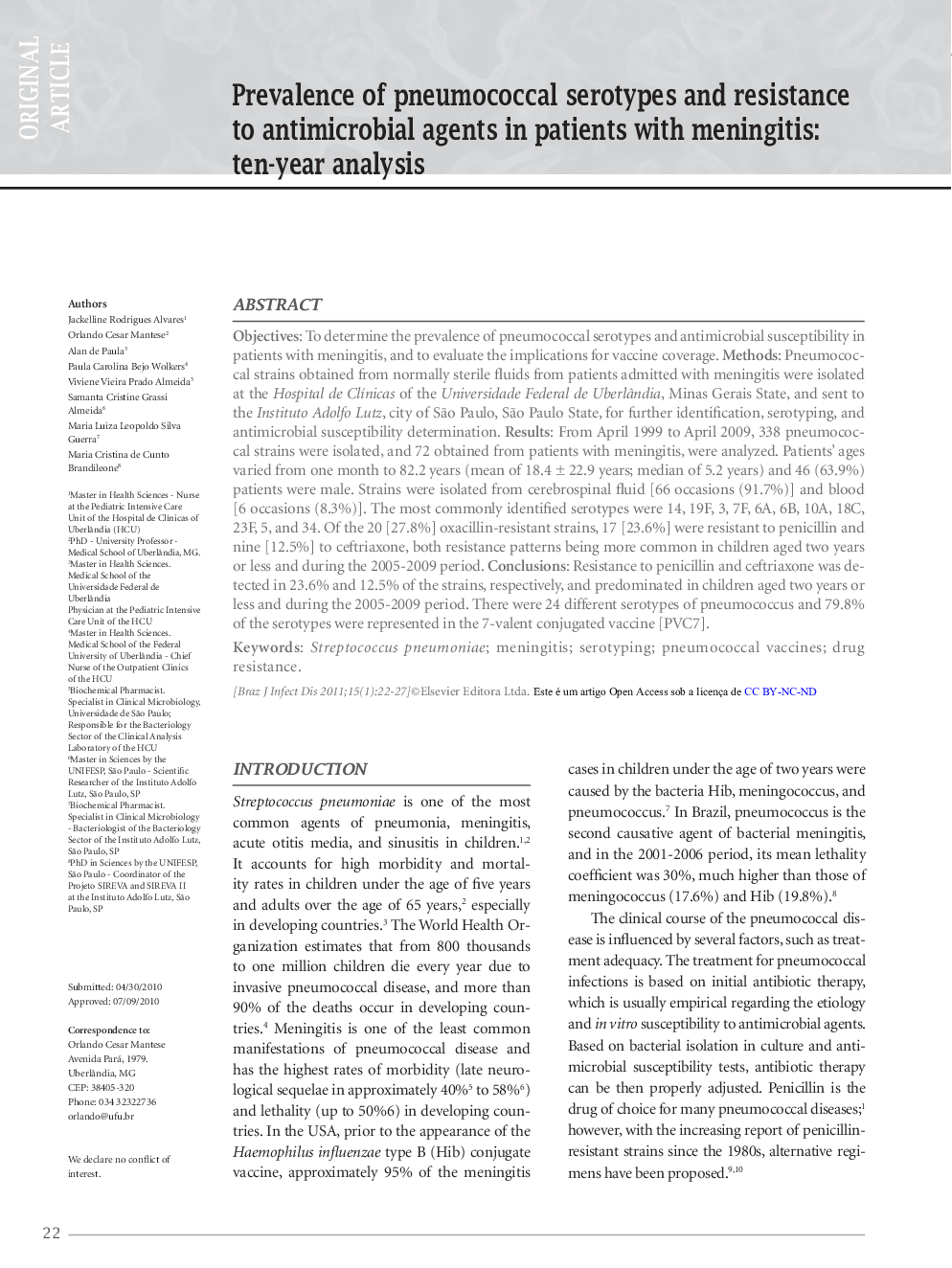| Article ID | Journal | Published Year | Pages | File Type |
|---|---|---|---|---|
| 3344608 | The Brazilian Journal of Infectious Diseases | 2011 | 6 Pages |
ObjectivesTo determine the prevalence of pneumococcal serotypes and antimicrobial susceptibility in patients with meningitis, and to evaluate the implications for vaccine coverage.MethodsPneumococcal strains obtained from normally sterile fluids from patients admitted with meningitis were isolated at the Hospital de Clínicas of the Universidade Federal de Uberlândia, Minas Gerais State, and sent to the Instituto Adolfo Lutz, city of São Paulo, São Paulo State, for further identification, serotyping, and antimicrobial susceptibility determination.ResultsFrom April 1999 to April 2009, 338 pneumococcal strains were isolated, and 72 obtained from patients with meningitis, were analyzed. Patients’ ages varied from one month to 82.2 years (mean of 18.4 ± 22.9 years; median of 5.2 years) and 46 (63.9%) patients were male. Strains were isolated from cerebrospinal fluid [66 occasions (91.7%)] and blood [6 occasions (8.3%)]. The most commonly identified serotypes were 14, 19F, 3, 7F, 6A, 6B, 10A, 18C, 23F, 5, and 34. Of the 20 [27.8%] oxacillin-resistant strains, 17 [23.6%] were resistant to penicillin and nine [12.5%] to ceftriaxone, both resistance patterns being more common in children aged two years or less and during the 2005–2009 period.ConclusionsResistance to penicillin and ceftriaxone was detected in 23.6% and 12.5% of the strains, respectively, and predominated in children aged two years or less and during the 2005–2009 period. There were 24 different serotypes of pneumococcus and 79.8% of the serotypes were represented in the 7-valent conjugated vaccine [PVC7].
